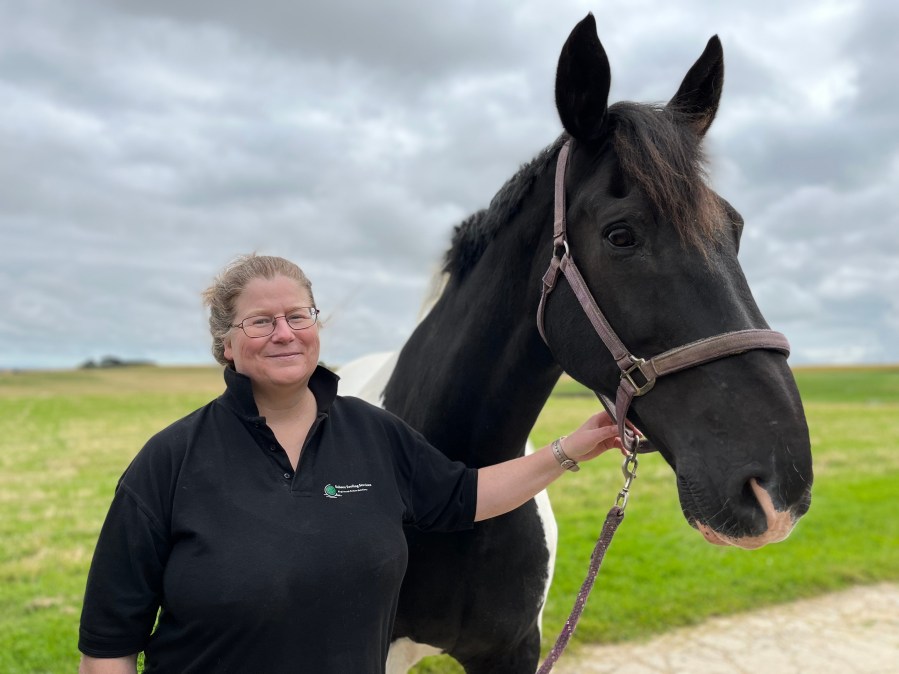Efforts to discover the cause of equine grass sickness (EGS) have turned to soil science. A collaboration between soil specialists at The James Hutton Institute in Aberdeen, animal health experts at Moredun Research Institute and the Equine Grass Sickness Fund in Midlothian is hoped to find clues to the origins of the deadly disease by comparing what is in soil from a ‘hot spot’ of EGS in Aberdeenshire with biological samples from actual cases.
Processing of the samples at the Hutton has had initial support thanks to a £4,000 donation from Aberdeenshire business owner Emily Anderson, whose sister, Gillian Green’s horse, Jed, is one of the few to survive the disease.
“It was a horrific experience to see Jed stuck with the chronic form of this terrible disease,” said Gillian, who is also manager of the National Soils Archive at the Hutton and is in charge of processing the samples. “He survived, thanks to a lot of support and effort from Emily, the stables and the wider community, but most don’t.
“By matching the soil samples with biological samples from horses that have contracted EGS, we hope modern techniques like environmental DNA (eDNA) could help to finally pinpoint the cause of this nightmare disease – or rule it out.”
Dr Beth Wells, a research scientist at the Moredun, is collecting the samples using an approach designed by scientists at the Hutton.
“For some time we’ve been taking a wider approach to EGS research, looking at the weather and environmental issues in particular,” she said. “Looking at soil is a relatively new avenue, but it is such a complicated factor to investigate, especially when we don’t know what we are looking for. That’s why I approached Professor Lorna Dawson at the Hutton to work on this puzzle with us.
“Now, with this long-term approach, guided by the Hutton, and using modern analysis techniques, we have a chance to look for a cause in a controlled way. Depending on the findings, we are hopeful that it will fill in another piece of this complex jigsaw.”
‘All this work has to be funded’
EGS is estimated to kill one in 200 horses in the UK every year; survival stories do exist, but this disease is usually fatal. It damages horses’ nervous systems resulting in partial or complete paralysis of their intestines. Tens of thousands of horses have died from the disease, including two young stallions at the late-Queen’s pony stud in Balmoral in 2018, forcing the estate to halt its breeding programme.
Emily, who also owns horses, also recently saw a close friend’s horse die of the disease, sparking her donation to the cause.
“All this work has to be funded and unless these samples are processed, they can’t be stored for future analysis and we could then still be in the dark and more horses will die, without us knowing why,” she said.
The soil samples are being stored in the National Soil Archive at the Hutton’s Aberdeen campus. It contains around 60,000 soil samples from across Scotland enabling long term analysis of everything from soil health to carbon storage and now also EGS.
The samples will form part of, and be matched with, horse samples held by the Equine Grass Sickness Biobank, run by Moredun, in partnership with the Equine Grass Sickness Fund, and funded by the British Horse Society.
The Biobank project, which involves collecting the samples from EGS cases as well as healthy horses, for comparison, is running for three years, with the samples then maintained, for use by researchers and scientists, for up to 20 years.
To support this project, click here, and for more information, click here.
Lead image of Hutton National Soil Archive manager Gillian Green with Jed, at their stables near Oldmeldrum









